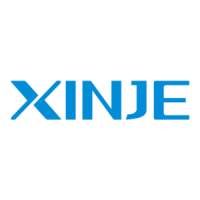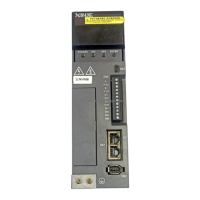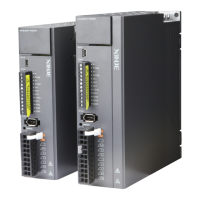
Do you have a question about the Xinje DS5K Series and is the answer not in the manual?
| Category | Servo Drives |
|---|---|
| Model | DS5K Series |
| Control Mode | Position control, Speed control, Torque control |
| Communication Interface | CANopen |
| Position Control Mode | CW/CCW |
| Feedback | Incremental Encoder, Absolute Encoder |
| Protection Features | Overvoltage, Undervoltage, Overcurrent, Overtemperature, Short Circuit |
| Operating Temperature | 0°C to 55°C |
| Storage Temperature | -20°C to +70°C |
| Vibration Resistance | 5.9 m/s² (10-55Hz) |
| Installation Altitude | Below 1000m |
| Input Voltage | Single/Three-phase 220VAC or Three-phase 380VAC (depending on the specific model) |
| Humidity | Less than 90%RH (non-condensing) |
Details checks required for product integrity upon arrival.
Provides essential notes for safe and correct installation.
Outlines critical safety warnings related to electrical wiring.
Advises on safety during maintenance and inspection procedures.
Details how to select the correct servo driver model.
Provides guidance on selecting the appropriate servo motor.
Covers the correct procedure for installing the servo driver.
Explains the installation process for the servo motor.
Explains the wiring of the main circuit connections.
Covers the fundamental operations of the operate panel.
Explains the various display contents and codes.
Explains how to select and switch servo control modes.
Covers the general principles of position control.
Explains the external pulse position mode operation.
Explains the internal position mode settings.
Explains general controls for speed modes.
Explains the external pulse speed mode.
Explains general torque control modes.
Explains the anti-blocking protection feature.
Details the torque limit settings.
Explains the distribution of I/O signals.
Provides an overview of the servo gain adjustment process.
Provides an overview of auto-tuning functions.
Details the specific gain parameters for adjustment.
Provides an overview of vibration suppression techniques.
Explains the model loop control for servo response.
Details the specific gain parameters for adjustment.
Lists all alarm codes and their explanations.
Details the wiring for Modbus-RTU communication.
Illustrates communication setup with Xinje PLC.
Covers fundamental servo system parameters.
Lists general parameters for external pulse position mode.
Lists general parameters for internal position mode.
Lists general parameters for internal torque control.











